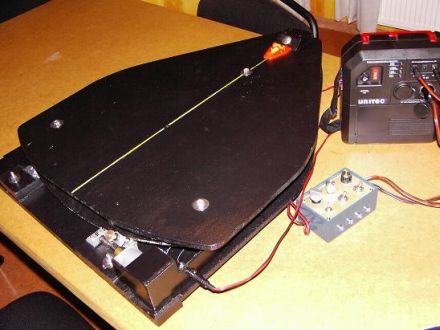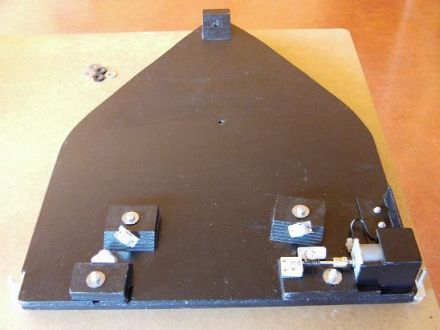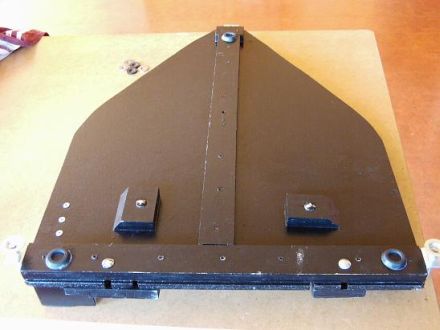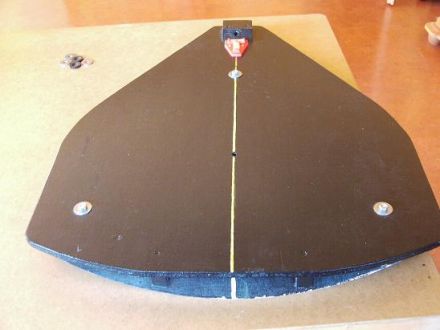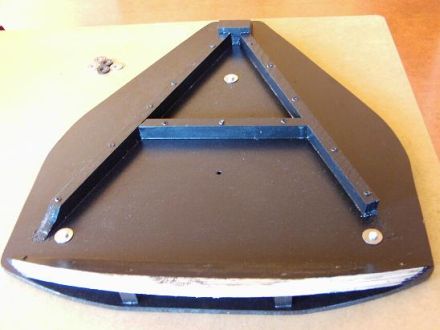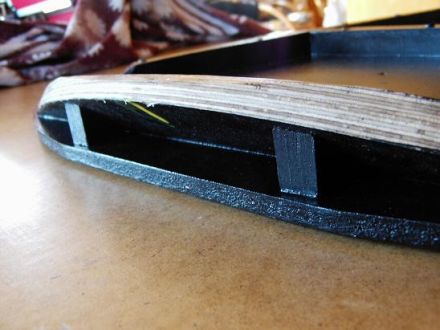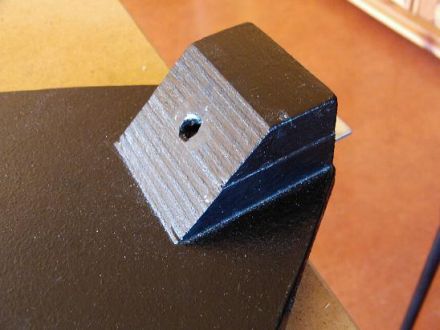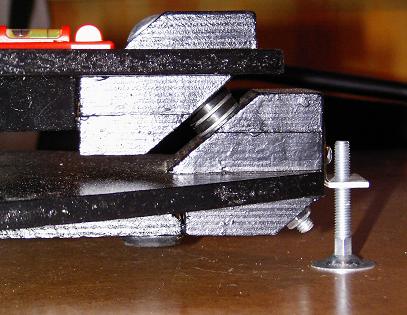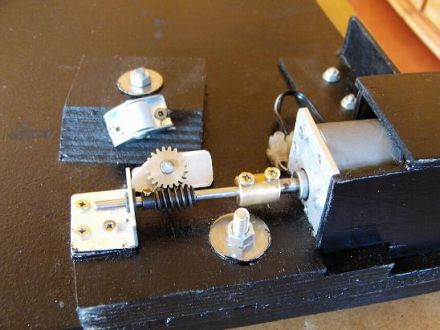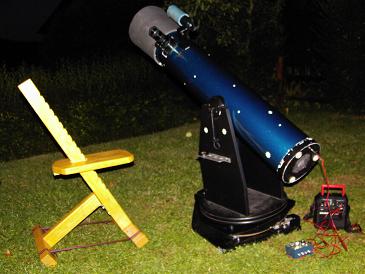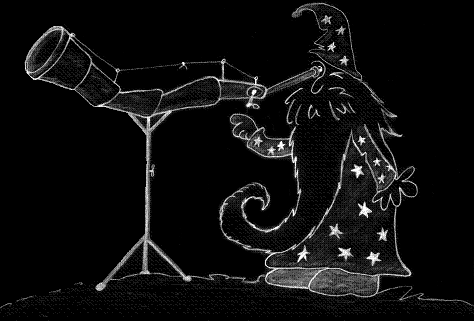Tuesday, January 10, 2006
|
I decided to build a prototype first and searched the internet for information. Google provided tons of useful web links. I selected the platform design of Reiner Vogel (German) because of its brilliant and simple design.
I needed to recalculate the original design for my telescope because of the different centre of gravity. I spend two weekends calculating the whole thing... 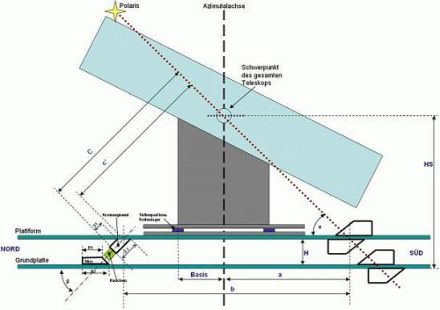
All necessary calculations were done using an Excel-Workbook which can be used to recalculate all dimensions for any telescope. Just enter your telescope's data in the Excel-Workbook. Thanks to the homepages of Jan Van Gastel (English) and Reiner Vogel (German), understanding and building this platform was not too hard. I am using it since January 2006 and I can't imagine observing without it! |
The different partsThe ground board:
The bottom side of the ground board. It was necessary to strengthen the board with stripes of 18mm plywood.
The upper platform board. The small spirit level helps to set up the platform. The three screws are just marks for the feet of the telescope.
The bottom side of the platform board. Once again, I used stripes of plywood to strengthen the board. The magnetic screws disturb the compass during platform setup, so I painted a yellow North - South line on the board which helps to align the platform while holding a compass at a save distance.
The platform board (side view). The segment was made using a power router and a home-made circular guide. This segment allows almost 60 minutes star tracking.
The southern bearing is a block of glued multi-plywood. The angle corresponds to the geographical lattitude of the observation spot, which is in my case 50.8 degrees.
One single screw holds both parts together. The bearing runs on plastic and steel washers.
The motor is a geared DC motor with a reduction ratio of 1:600. The worm wheel set has a reduction ratio of 1:20. The shaft directly drives the wooden segment.
Initially I simply used a 50 ohm power potentiometer to regulate the motor speed. Later, I used an electronic circuit with an LM317 voltage regulator and a 12V power supply. that's it....Here is a picture of my telescope on the platform. The accuracy is sufficient enough to keep a planet more than 30 minutes in the eyepiece. The cables turned out to be stumble traps at night. Also, the friction drive slipped during winter because of the shaft being iced. So I solved these problems and constructed the final version.
|

